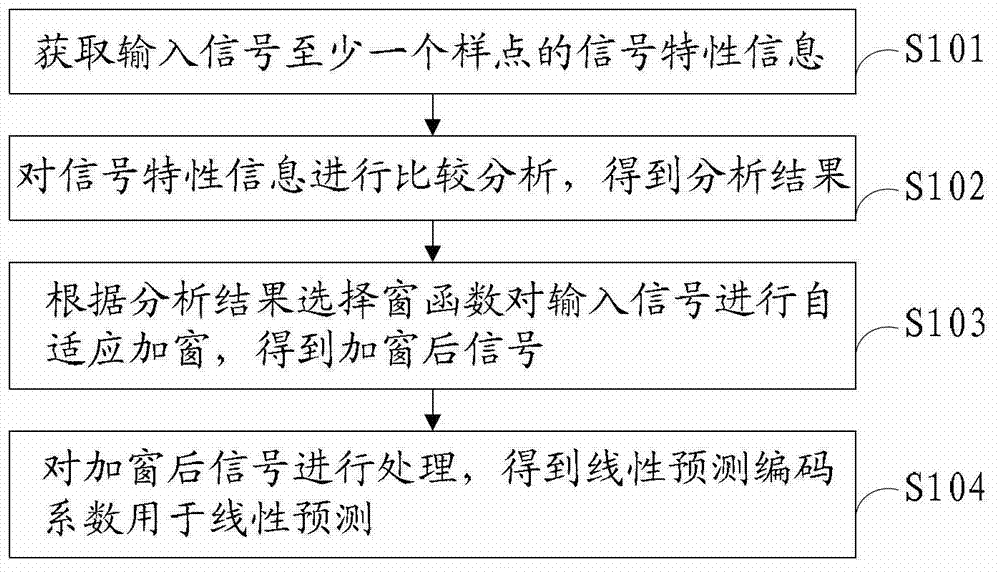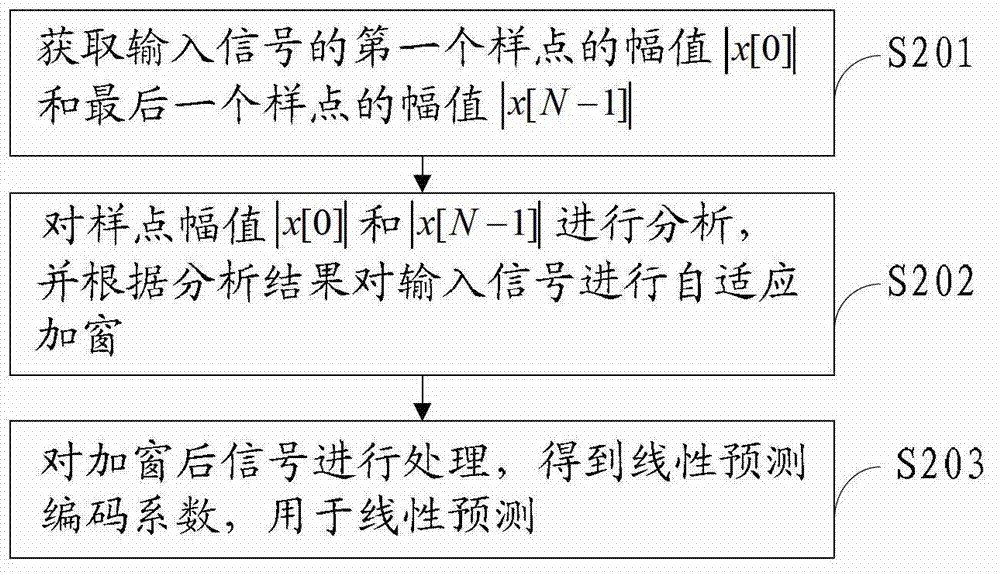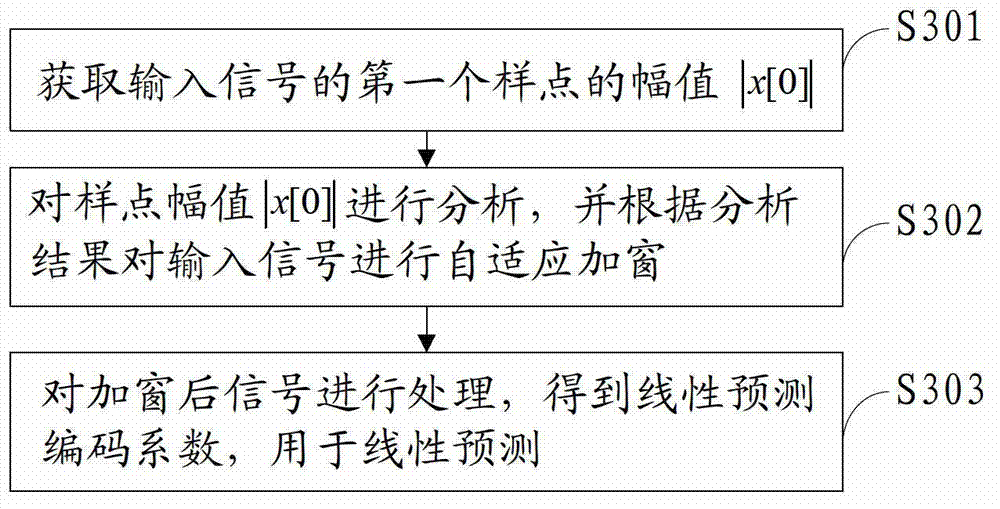Linear predication analysis method, device and system
A linear prediction analysis, linear prediction technology, applied in the field of communication, can solve the problems of the linear prediction performance not being optimal, the complexity of the linear prediction analysis is large, etc., to achieve the effect of improving the prediction performance
- Summary
- Abstract
- Description
- Claims
- Application Information
AI Technical Summary
Problems solved by technology
Method used
Image
Examples
Embodiment 1
[0046] The linear predictive analysis method provided by Embodiment 1 of the present invention, such as figure 2 As shown, the method steps include:
[0047] S201. Obtain the amplitude |x[0]| of the first sample point and the amplitude |x[N-1]| of the last sample point of the input signal, where, x[i], i=0, 1, ..., N-1 is the input signal, and N is the number of sample points of the input signal (such as 40, 80, 160, 240, 320, etc.); the input signal here refers to the signal input for LPC analysis, which may be a Frame signal, it may also be a frame signal plus a section of signal in the history buffer (such as L samples of the history buffer, L can use different positive integers according to different codecs, such as 40, 80, 160, 240 , 320, etc.);
[0048] S202. Analyze sample point amplitudes |x[0]| and |x[N-1]|, and perform adaptive windowing on the input signal according to the analysis results:
[0049] For example, when the number of input samples is 40:
[0050] ...
Embodiment 2
[0081] The linear predictive analysis method provided by Embodiment 2 of the present invention, such as image 3 As shown, the method steps include:
[0082] S301. Obtain the amplitude |x[0]| of the first sample point of the input signal, where x[i], i=0, 1, ..., N-1 is the input signal, and N is the input signal The number of sample points; the input signal here refers to the signal input for LPC analysis, which may be a frame signal, or a frame signal plus a section of signal in the history buffer (such as L sample points in the history buffer, L Different positive integers can be used according to different codecs, such as 40, 80, etc.);
[0083] S302. Analyze the sample point amplitude |x[0]|, and perform adaptive windowing on the input signal according to the analysis result:
[0084] If the amplitude |x[0]| of the first sample point of the input signal is greater than (or greater than or equal to) a certain preset threshold thr, the input signal is windowed with the fi...
Embodiment 3
[0096] The linear predictive analysis method provided by Embodiment 3 of the present invention, such as Figure 4 As shown, the method steps include:
[0097] S401. Acquire the average value of the amplitude of the first (or last) M sample points of the input signal Wherein, x[i], i=0, 1, ..., N-1 is the input signal, and N is the number of sample points of the input signal; the input signal here refers to the signal input for LPC analysis, which may be a Frame signal, it may also be a frame signal plus a section of signal in the history buffer (such as L samples of the history buffer, L can use different positive integers according to different codecs, such as 40, 80, etc.);
[0098] S402, the average value of the amplitude of the first (or last) M sample points Perform an analysis and adaptively window the input signal based on the analysis results:
[0099] If the amplitude average of the first (or last) M sample points Greater than (or greater than or equal to) a pr...
PUM
 Login to View More
Login to View More Abstract
Description
Claims
Application Information
 Login to View More
Login to View More - R&D
- Intellectual Property
- Life Sciences
- Materials
- Tech Scout
- Unparalleled Data Quality
- Higher Quality Content
- 60% Fewer Hallucinations
Browse by: Latest US Patents, China's latest patents, Technical Efficacy Thesaurus, Application Domain, Technology Topic, Popular Technical Reports.
© 2025 PatSnap. All rights reserved.Legal|Privacy policy|Modern Slavery Act Transparency Statement|Sitemap|About US| Contact US: help@patsnap.com



